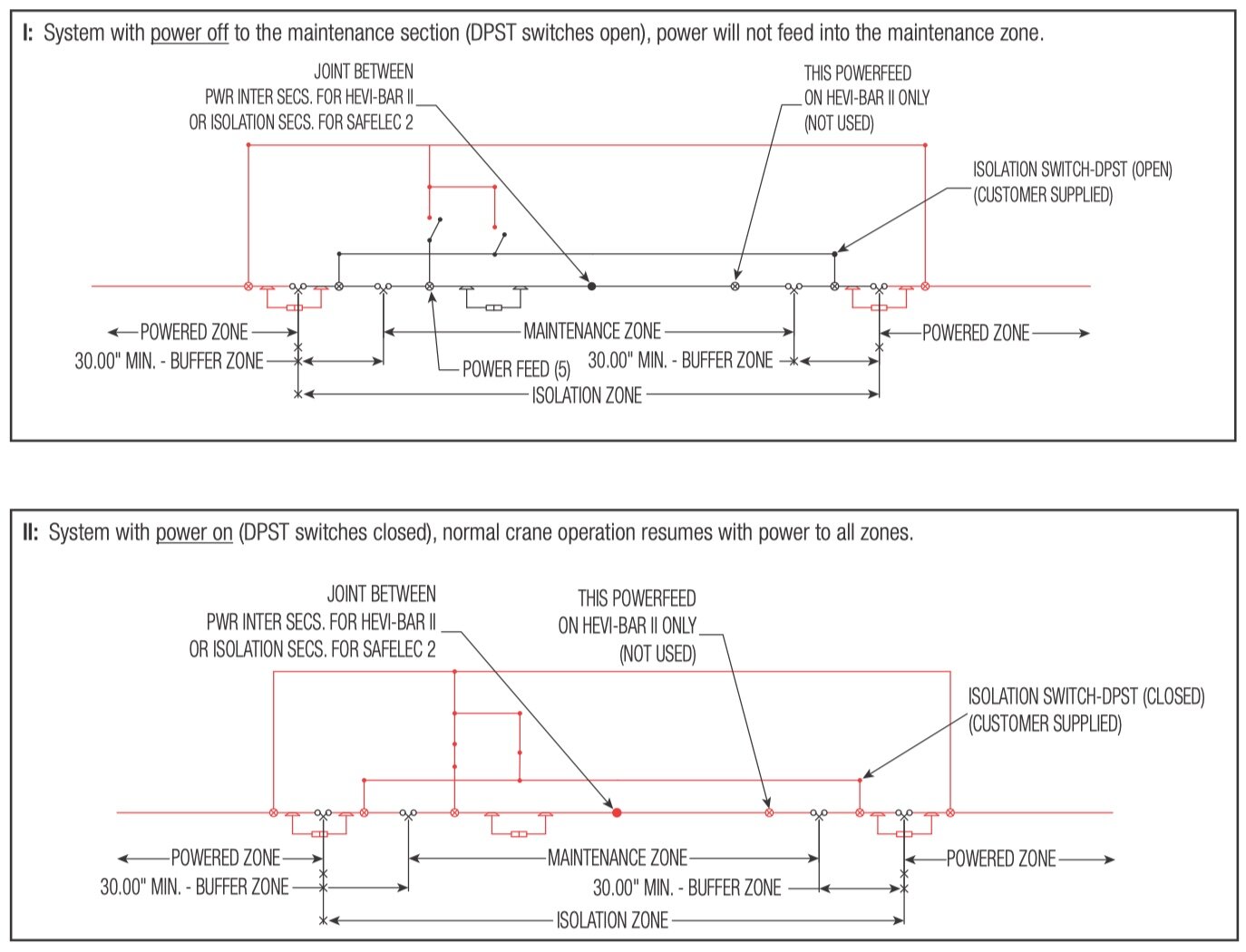When Basic LOTO Will Get You In Trouble
SOMETIMES EVEN ELEGANT SOLUTIONS DON'T CUT IT
LOTO (Lockout/Tagout) is probably the most critical safety procedure in the overhead crane world. It is what engineers call an "elegant solution."
Segmented conductor bar
The word elegant, in general, implies refinement and simplicity, rather than complexity. An elegant solution in mathematics, engineering, and programming is when the maximum effect is achieved with the smallest or simplest effort. What can be simpler than using a standard padlock to lockout power with the only key in the possession of the maintenance worker?
Unfortunately, the elegant answer provided by LOTO has become a victim of its simplicity. In other words, not all real-world situations are as simple as a single crane on a single runway. LOTO's elegant solution breaks down in cases involving multiple cranes on a single runway; that is, in a production environment in which the maintenance of one crane cannot impinge on the other cranes' operation on that runway.
I've recently been engaged to work on a project for General Dynamics. We're installing three cranes on a single 600+ foot long runway at an elevation of approximately 100 feet above floor level. The cranes are 130 feet in span and set on the runway in the order of 100-ton, 170 ton, and 100 ton. The assignment was to provide a LOTO safety program such that each of the cranes could be serviced while allowing the other two cranes as much runway as possible to operate in a near-normal fashion.
SEGMENTED RUNWAY CONDUCTOR BAR
The knee jerk reaction is to simply segment the runway conductor bar and provide a separate power feed to each section. Unfortunately, this simple solution is subject to probable failure due to the potential of "back feeding" power to the de-energized runway segment.
Dual Runway Collectors
In the current National Electric Code (and for some time now), all cranes must have a dual collector setup. This mandate was introduced with the advent of Variable Frequency Drives and other solid-state microelectronic crane controls. Solid-state devices are susceptible to "dirty power," and the dual collector setup helps mitigate this problem.
THE DANGER OF BACK FED POWER
Unfortunately, while solving the dirty power issue, the implementation of dual collectors introduced back-fed power.
In other words, the simple setup of conductor bar segmentation with a simple isolation gap and separate power feeds could lead to inadvertent back-feed of power to a runway section that had been de-energized if a second crane travels from the energized part of the runway to the de-energized part. A tech working on the de-energized portion and touching an electrical component would likely be electrocuted.
CONDUCTIX POWERGUARD
After mulling over the problem, I vaguely remembered a product by the conductor bar company Conductix-Wampfler. After a few minutes of online searching, I found the product I was remembering, Conductix PowerGuard.
Here's how the Conductix brochures opening paragraph explained the product.
Power Guard, Electrification Isolation Solutions
PowerGuard, along with Conductix-Wampfler Power Interrupting Sections, is designed to provide safe maintenance zones for servicing overhead cranes and other mobile equipment. This specially engineered switch array is ideal for three-phase bar systems that use tandem collector assemblies. By employing both the Power Interrupting Sections and PowerGuard, the user can ensure that tandem collectors from adjacent cranes will never accidentally transfer live power into the maintenance zone. This is accomplished by assigning a dedicated switch for the Power Interrupting Section's "buffer zone," which isolates it from the energized runway. A third switch then grounds the maintenance zone to ensure the maintenance person is safe while working on the crane.
FEATURES-
· Grounded maintenance zone
· Designed for the application
· Three switch sets for safe operation
· Single-handle or Kirk ® Key design for error-free operation
· Visual voltage indicator
· Voltage test points
BENEFITS-
• Dual-voltage indicators
• Personnel safety
• Simple switch operation
• Real maintenance zone isolation
• Complies with lock-out / tag-out procedures.
CONDUCTIX POWERGUARD, HOW IT WORKS
Runway conductor bar layout for multiple cranes
Power Interrupting Sections (PIS) create unpowered conductor bar zones to safely work on overhead cranes. The PIS provides a buffer zone to prevent tandem collectors on adjacent cranes from creating a power bridge that could potentially back-feed the maintenance zone. PIS consist of three short sections of the conductor bar with an air gap between each section. Each of the three conductor bar sections has a power feed. The buffer zone is always the middle piece of the conductor bar. Of the two remaining bar segments, one will be attached to the powered runway. The other will be attached to the maintenance zone. The powered section's location and the maintenance section depend on whether the maintenance zone needs to be right or left.
Three positions of functionality
In other words, here are the three steps;
This shows the power and simplicity of the PowerGuard system.
CONDUCTIX POWERGUARD, HOW IT’S WIRED
Conceptually it’s quite simple
More specifically, here are the wiring diagrams for a maintenance section located at either end of the runway or the middle.
Drawing key
End maintenance zone
Middle maintenance zone
SUMMARY
I am generally reluctant to endorse any product and try to make my articles as brand agnostic as possible. Still, in this case, the Conductix PowerGuard product is a worthy "off the shelf" solution to a severe problem. I've done an extensive online search and have found no other "off the shelf" alternatives. If any readers are aware of one, please let me know, and I will update this article (Larry@OverheadCraneConsulting.com).
At this time, this appears to be our only option for an "off the shelf" pre-engineered solution to an all-too-common situation in which the standard implementation of LOTO just doesn't quite cut it.
PowerGuard vs. Homemade (risky) solution
For additional information on Conductix PowerGuard, click below;











